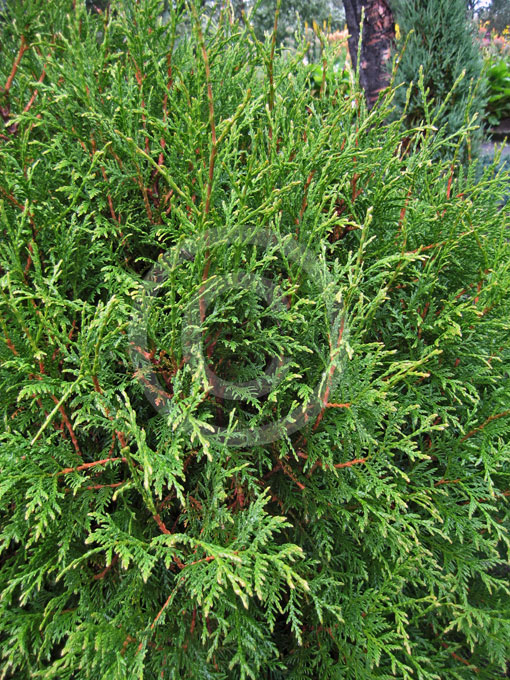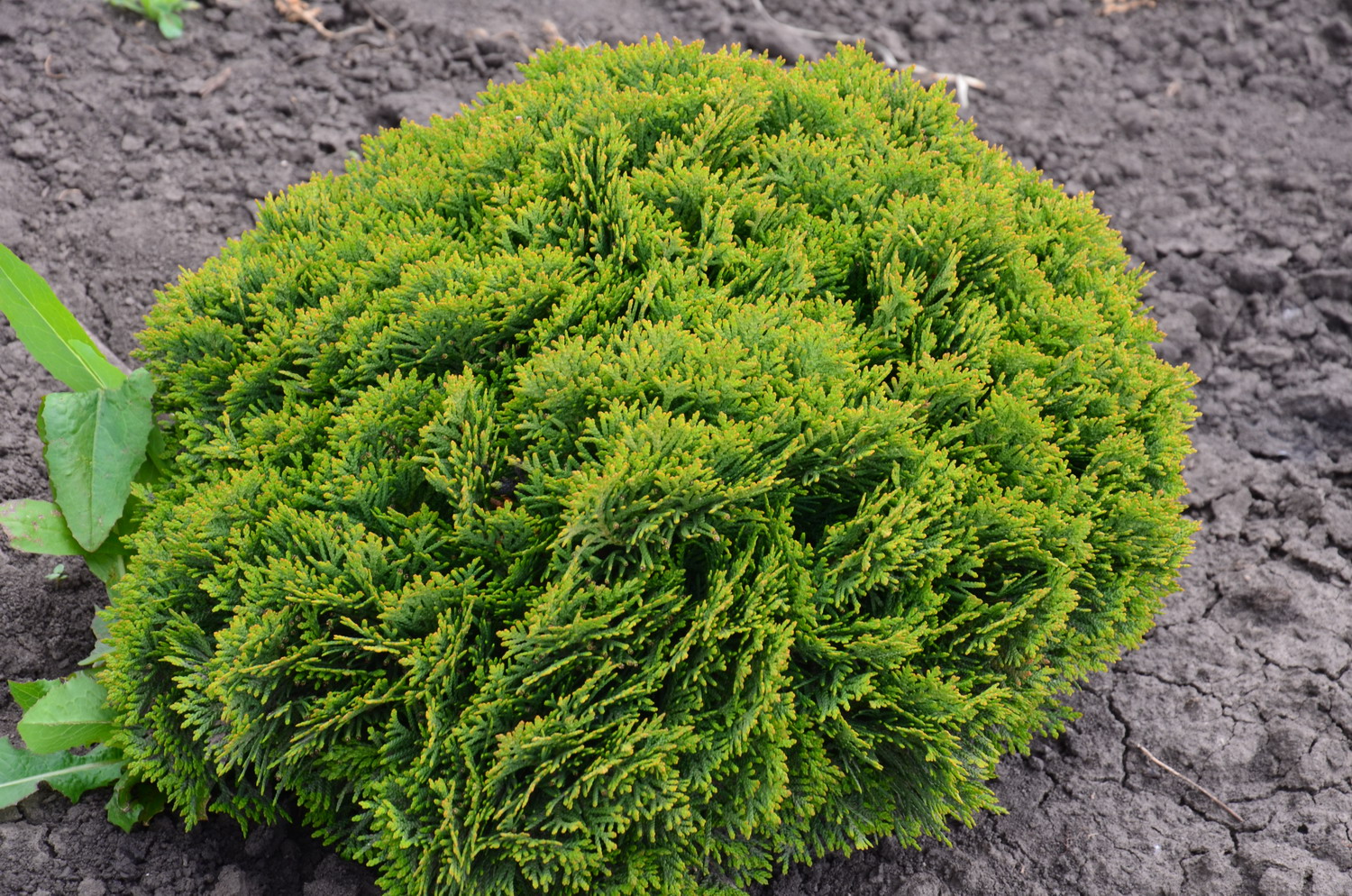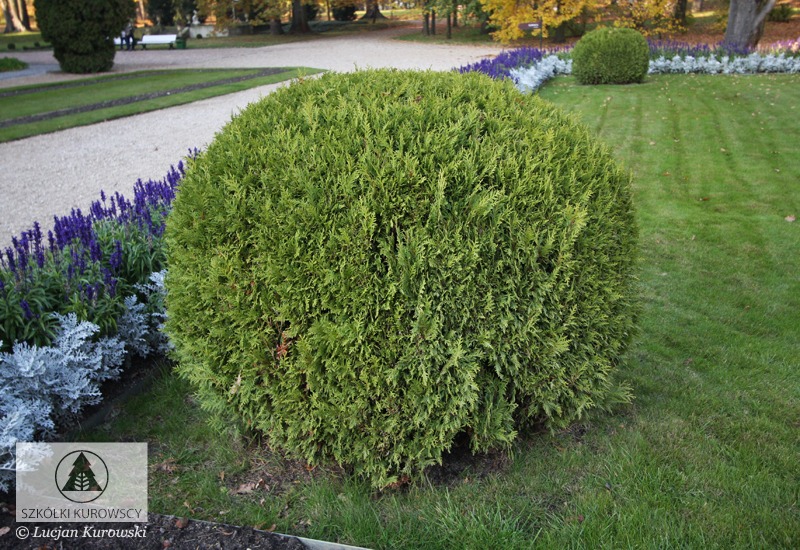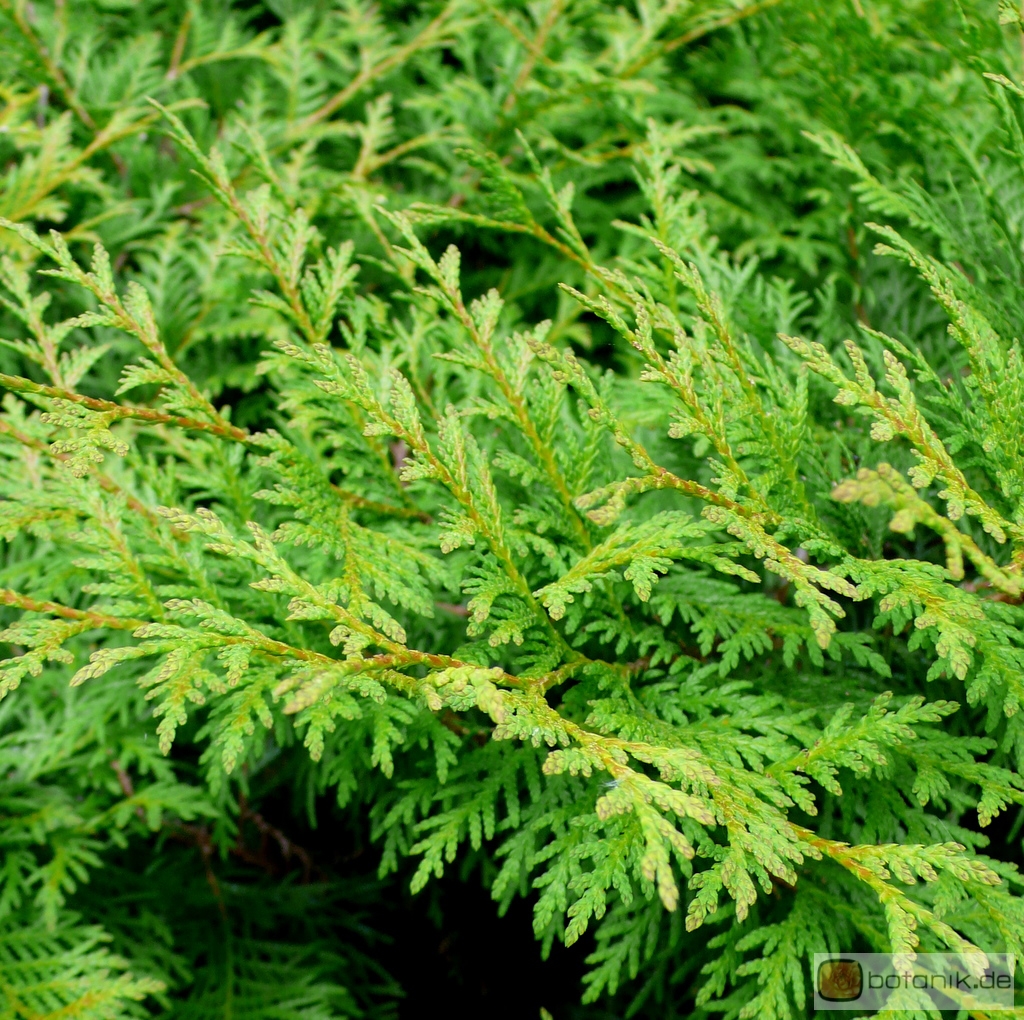
Plant Gallery Encyklopedia Roślin Thuja occidentalis 'Globosa
Check Out Thuja Occidentalis On eBay. Fill Your Cart With Color Today!

Thuja occidentalis (туя західна) 'Globosa' СадГород
Thuja occidentalis ( Globosa American Arborvitae ) Evergreen, coniferous tree. This dwarf cultivar has a spherical shape with gray to green leaves. Foliage in winter is often brown to green. This plant enjoys good sun exposure and a moist, acidic soil. Also snown as cv. Globularis or Tom Thumb.

Thuja occidentalis 'Globosa' Rasadnik Franceskija
Scientific Name: Family: Cupressaceae Genus: Thuja Species: occidentalis Hardiness Zone: 2 to 7 Height: 20 to 40 ft Width: 10 to 15 ft Common characteristics: The northern white cedar is a shrub to small tree, heights can reach 20' to 40' tall and 10' to 15' wide.

Thuja occidentalis 'Globosa' Thuja occidentalis, Plants, Plant needs
Thuja occidentalis 'Globosa Aurea' is a delightful, low-growing evergreen shrub, perfect for adding a touch of bright color to the landscape. Its adaptability and easy-care nature make it a popular choice for various garden styles and purposes. Thuja occidentalis 'Globosa Aurea': An In-depth Look

Thuja occidentalis Globosa Globosa Arborvitae information & photos
Thuja occidentalis, also known as northern white-cedar, [1] eastern white-cedar, [2] or arborvitae, [2] [3] is an evergreen coniferous tree, in the cypress family Cupressaceae, which is native to eastern Canada and much of the north-central and northeastern United States. [3] [4] It is widely cultivated as an ornamental plant.

Thuja occidentalis "Globosa" Tuja
Thuja Occidentalis Globosa Arborvitae is an evergreen, dwarf conifer shrub with a spherical form. Globosa Arborvitae is blanketed in gray-to-green leaves that turn brown to green during winter. This deer-tolerant selection grows well in full sunlight with moist, acidic soils. It is a great choice for borders and hedges. Ideal for USDA Zones 2-7

Thuja occidentalis “Globosa” (Tuja “Globosa”) Rasadnik Fuderer
Thuja Occidentalis is sacred to the Ojibwe people, which are among the most numerous indigenous peoples found north of Rio Grande. The Ojibwe call it the Grandmother Cedar and they have listed it as one of the four major plants of their medicinal wheel.

Туя западная Thuja occidentalis’Globosa Aurea’ Купить хвойные деревья
Thuja occidentalis 'Globosa Aurea' is a dwarf, globe-shaped Arborvitae cultivar with attractive golden-yellow foliage. This evergreen shrub, ideal for small gardens, reaches about 2-4 feet in height and width (60-120 cm). Ideal for rock gardens, border fronts, container plantings, and as an accent in mixed borders..

Thuja occidentalis ‚Globosa' Duet s.j. Produkcja i dystrybucja roślin
Thuja occidentalis Common names: Eastern arborvitae, Northern white cedar, Eastern white cedar, American arborvitae All pictures (4) Share Overview More Information Care Knowledge Cultivars Photo Gallery (4) Thuja occidentalis (Eastern Arborvitae), habit, winter; © Edward A Hedborn, Jr

Tuia Globosa nana occidentală globulară. Thuja occidentalis Globosa
Thuja Type: Conifer Native to (or naturalized in) Oregon: No Conifer, evergreen tree/shrub, to 40 ft (12 m) high, broad pyramidal, branches erect and out spreading, densely crowded. Bark reddish brown, fissured into narrow ridges covered with elongated scales.

Thuja occidentalis 'Globosa Aurea', Lebensbaum 'Globosa Aurea'
Height: 20.00 to 40.00 feet Spread: 10.00 to 15.00 feet Bloom Time: Non-flowering Bloom Description: Non-flowering Sun: Full sun to part shade Water: Medium Maintenance: Low Leaf: Evergreen Attracts: Birds Other: Winter Interest Tolerate: Clay Soil, Wet Soil, Black Walnut, Air Pollution Invasive: Where is this species invasive in the US?

Zerav západní Thuja occidentalis Globosa, rostlina
Potentially harmful. Genus. Thuja. Genus description. Thuja are fast-growing evergreen trees of narrowly conical habit, with flat sprays of tiny, aromatic, scale-like leaves and small knobbly cones. Name status. Accepted. Advertise here. Find help & information on Thuja occidentalis 'Globosa' from the RHS.
/Thuja_occidentalis_foliage_Wisconsin-58f3064b3df78cd3fc6e39b7.jpg)
How to Manage and Identify Arborvitae
Scientific name: Thuja occidentalis Pronunciation: THOO-yuh ock-sih-den-TAY-liss Common name (s): White cedar, arborvitae, Northern white cedar Family: Cupressaceae USDA hardiness zones: 2A through 7B (Fig. 2) Origin: native to North America Invasive potential: little invasive potential Uses: screen; hedge; specimen; reclamation; highway median

Thuja occidentalis 'Globosa' Żywotnik zachodni 'Globosa'
Native of N. America from the Gulf of St Lawrence to Manitoba, south to New York State and the region of the Great Lakes and with a scattered distribution farther south in the Appalachians; it is often found in swampy locations, but the best stands are on well drained soils.

Thuja occidentalis 'Globosa' Kugelthuje Garten Pflanzen Blumen
Discuss Thuja occidentalis 'Globosa' with other Shoot members Read more ShootChecker™ Get the Right Plant, Right Place Thuja occidentalis 'Globosa' (White cedar 'Globosa') Select a garden project to check if this is the right plant for the garden conditions. Garden project. Update garden condition details.

Thuja occidentalis Globosa
Thuja, belonging to the cypress family, is a genus of coniferous trees commonly known as arborvitaes, an apt name that translates to 'tree of life'. Originating from North America and East Asia, these trees have a rich history. Native American tribes utilized them for various purposes, from canoe building to medicine.